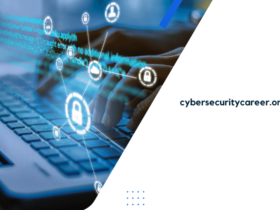Start Learning Cyber Security
Start Learning Cyber Security – In today’s ubiquitous online and digital presence, the concept of “cybersecurity” is a hot topic. As a result, the demand for quality, cheap, and actionable education has never been more significant as the cyber business grows, with new positions opening, skills in need, and the requisite frameworks for compliance.
What is the best way for me to learn about Cybersecurity?
These are some of the most typical questions posed by students interested in pursuing a career in Cybersecurity. So I’ve come up with five basic strategies for students to learn Cybersecurity and extra introductory materials you may use right now to get started with Cybersecurity.
Some people who desire to learn Cybersecurity need help with doing it. They want to know about Cybersecurity but don’t have the funds or time to enroll in traditional college courses. Perhaps their work schedule is too demanding, or their shifts vary too frequently for them to be able to attend lessons regularly. They may not have access to transportation. There are various reasons why someone might need help understanding cyber security in a traditional classroom setting. If this describes you, make sure to learn more about cyber security. There is a method to understand cyber security on your own time and from the comfort of your home.
How can you teach yourself cyber security?
Determine what you want to study, find learning materials, and design a learning plan to learn cyber security from home. Then, daily, systematically study that information. Finally, complement your studies with hands-on experience and laboratories that you can complete from your home.
Beginners’ Guide to Cybersecurity
The importance of Cybersecurity has never been greater than it is now. Due to COVID’s quick move to remote working and the massive expansion of the online world, businesses are increasingly required to invest in IT security to protect themselves from cyber hacking, data compromise, and identity theft. When it comes to Cybersecurity, the first step is to learn the fundamentals of IT systems and networks, such as the many types of networks and their protocols. Then, after you’ve mastered the essentials, you can go on to the fundamentals of networking traffic, security, and communication.
When it comes to Cybersecurity for beginners, learning how to establish and analyze network servers is also crucial, as are issues like data decryption and encryption and backup processes and data recovery. When it comes to Cybersecurity for beginners, learning how to prevent hacks is equally critical. Cyber-attacks and hacks are becoming more common as technology progresses, and the online realm expands, especially in mobile payments, e-commerce, and cloud computing.
Criminals are finding it easier to breach systems to steal personal and financial information because of advances in machine learning, social media, and the large assortment of apps that many of us use regularly. As a result, businesses have a particularly significant risk, where cybersecurity experts come in. Most organizations and enterprises need to build and manage secure systems in today’s environment, and experts in this field are in high demand.
How to get started in Cybersecurity without any prior experience
Starting a career in Cybersecurity with prior experience is easier than you would imagine, and it does not require a significant time or financial investment. With some baseline training, you can transfer to a position in Cybersecurity regardless of your background or experience. The demand for IT security specialists is tremendously high, and there are numerous chances for anyone interested in pursuing a career in this industry. A foundational cybersecurity course for beginners that covers the foundations and primary areas of IT security and data protection is the ideal place to start. After completing a cybersecurity course, you will be prepared to serve as part of an organization’s IT security team.
Several specialized and advancement opportunities will become more available as your abilities, expertise, career progress, and the digital world evolves. Cybersecurity Specialists or Technicians, IT auditors, and Incident responders are examples of entry-level professions. As a starting point, anyone interested in Cybersecurity for beginners should look into these positions. Cybersecurity Consultants and Penetration testers are mid-level professions, whereas Cybersecurity Engineer and Managerial positions are upper-level positions in Cybersecurity.
IT security has many responsibilities available at each level, with lots of room for advancement down the road. The demand for cybersecurity training is steadily increasing. You’d like to expand into this field inside a company where you already work or prefer to make a total career change
The drawbacks of self-teaching cybersecurity
Before you get all geared up and plan on conquering the cyber security world, you should be aware of the constraints you’ll face if you learn from home.
Limitation #1: there is a lack of access to equipment. Remember that you’ll be at a disadvantage compared to others taking cybersecurity classes in college or working in the industry because you’ll likely have limited access to equipment and technology. Colleges spend tens of thousands of dollars on equipment for their students, and you will have different access if you learn from home. You can know; it’s just something you’ll have to work around.
Limitation #2: There needs to be one-on-one mentoring from an instructor. You’ll be on your own since you’re learning on your own. Most instructors are professional, knowledgeable, and eager to answer students’ queries. Keep in mind that you will only have immediate access to an expert as an independent learner if you get stuck.
How to Start Learning Cyber Security on Your Own?
The first step in learning Cybersecurity is deciding what we want to learn and in what order we want to learn it. Understand that investing one minute now to plan your study path will save you at least ten minutes later since you will be on track and more efficient with your time.
Step 1: Decide what you’d like to learn.
Cyber security is vast, with numerous specialties constantly changing and expanding. The first step in learning Cybersecurity is to decide what you want to concentrate on. You can alter your mind or pivot later, but it helps if you narrow down an area that you believe would interest you. Consider whether you want to specialize in programming, penetration testing, network security, forensics, or anything else. Making a decision now will assist you in determining your best course of action.
If you’re unsure what the domains listed above signify, conducting your due diligence is one approach to learning more about them and making a wiser conclusion. Please find out more about these careers and what they require. Look at job advertisements to get a sense of what the job entails, and see if you can chat with people doing the job to learn more.
Step 2: Identify high-quality resources.
Now that you have a general concept of what you want to achieve, look for free or low-cost resources to help you get started. O’Reilly’s Safari, Cybrary, and Pluralsight are just a few online cybersecurity learning platforms. Many courses are accessible on Udemy, and your local library should have several books. Make sure any content you choose, particularly novels, is new and, at most, three years old. Avoid platforms like YouTube that do not maintain a high level of quality control. While YouTube is a fantastic tool, there needs to be quality control, so you can quickly obtain inaccurate information.
5 Free Website to assist you in learning Cybersecurity
#1. Foundations of Cybersecurity
About: This course will introduce you to the fundamental ideas of Cybersecurity. It will also help with the investigation of various forms of attacks. You’ll learn how to use tools and design to safeguard the environment before moving on to more complex topics. The most fundamental aspects of Cybersecurity will be covered, including the impact of cyberattacks and the overall cybersecurity responsibilities. By the end of this study route, you will have a solid understanding of security principles, such as common risks and techniques for preventing them, cryptography essentials, such as public-key infrastructure, and the job market for cybersecurity professionals, among other things.
Get the course here.
#2. Cybersecurity Basics: A Hands-on Approach
About: This course provides an overview of Cybersecurity, highlighting many field elements. You’ll discover the most common cybersecurity dangers and how to defend against them. The training takes a hands-on approach, with all the necessary materials to help you better understand threats and devise effective responses.
Get the course here.
#3. Cybersecurity Fundamentals
About: An overview of the main aspects of computing security will be provided in this introduction. You’ll discover essential cybersecurity principles, topics, and tools for resolving issues in the computing security area. You’ll also learn to safeguard systems and network infrastructures, analyze and monitor possible risks and assaults, and design and deploy security solutions for large and small businesses.
Source: edX
Get the course here.
#4. Cybersecurity Economics
About: Through the prism of economic principles, this course introduces the topic of Cybersecurity. This course will provide you with the financial concepts, measurement approaches, and data analytics you need to make better security and IT decisions and an understanding of the forces that shape the security decisions of other actors in the information goods and services ecosystem. Four leading research teams will deliver it.
Source: edX
Get the course here.
#5. Introduction to Cybersecurity Tools & Cyberattacks
About: This course will provide the necessary background to comprehend essential Cybersecurity. You’ll learn about the history of Cybersecurity and the forms and motivations of cyberattacks to improve your understanding of contemporary dangers to businesses and individuals.
Source: Coursera
Get the course here.










Leave a Reply